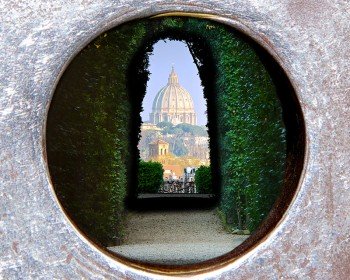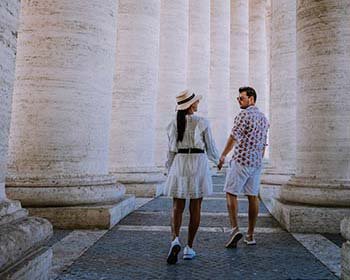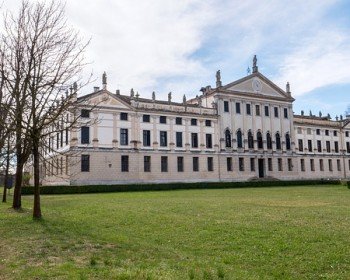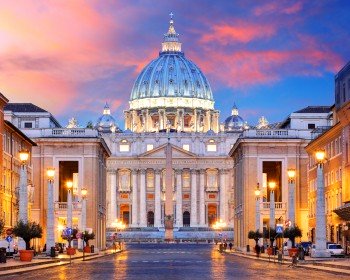In Castel Gandolfo you can take a tour of the Pope’s summer residence, discover the history of the Papal Castle and admire its beautiful gardens including the gardens of Villa Barberini.
The history of the Pontifical Villas
The Pontifical Villas are extraterritorial areas of the Holy See located in the Castelli Romani in an area of about 55 hectares. This complex includes Villa Barberini and the Villas Giardini del Moro and Cybo.
The history of the Pontifical Villas is very ancient, it is traced back to Mussolini who, with the signing of the Lateran Pacts of 1929, recognizes the concession to the Vatican of these extra-territorial properties that houses Popes for the holidays.
The Apostolic Palace of Castel Gandolfo (the fulcrum of the complex) at the behest of Pope Francis, in 2016 the complex is no longer a papal summer residence but has been definitively transformed into a museum open to the public. The Palace was built between 1623 and 1629 and was inhabited for the first time by Alexander VII elected pope in 1655.
On the facade of the Papal Palace are clearly visible the papal coat of arms and some inscriptions in Latin. From the Courtyard of the Audiences starts the Grand Staircase that leads to the main floor in which are the most important rooms such as the Hall of the Swiss, the Hall of the Palafrenieri and the Hall of the Noble Guards. Then Hall of the Servants of Cloak and Sword, Hall of the Compass, Throne Room and the Hall of the Consistory.
Then there is the Gallery of Benedict XIV, which leads to one of the oldest rooms of the palace: the Papal Chapel of Urban VIII.
Then there are the rooms of the pope’s private apartment.
Specola Vaticana
The Vatican Observatory is the astronomical observatory and the scientific research institute of the Catholic Church.
The management of the Vatican Observatory is entrusted to the Society of Jesus and directed since 18 September 2015 by Brother Guy Joseph Consolmagno.
The structure of Castel Gandolfo, equipped with four telescopes, due to low light conditions no longer performs astronomical observation activities but only analyses on meteorite collections.
Villa Cybo
The building of Villa Cybo was designed by the architect Francesco Fontana and later purchased by Cardinal Camillo Cybo-Malaspina in 1717. In 1841 the building was entrusted by Gregory XVI to the Brothers of the Christian Schools. In 1957, at the behest of Pius XII, the Audience Hall was built, entrusted to the Focolare Movement and used for congresses that attracted many lay and consecrated people.
Villa Barberini
Villa Barberini was commissioned and built by Prince Taddeo in 1631 (nephew of Urban VIII) but it seems that the construction of the palace and the arrangement of the gardens were entrusted to Gian Lorenzo Bernini. In the villa there are two Zeiss telescopes of the Vatican Observatory of 1935. The villa is connected to Villa Cybo and the Papal Palace by a viaduct built in 1773. From the viaduct you can see the section that crosses the road, called "Colonnato". Villa Barberini also allows you to visit the Antiquarium and the beautiful Barberini Garden.
The gardens of the Pontifical Villas
The gardens of the Pontifical Villas are a real artistic jewel and represent one of the most beautiful places in the Alban Hills.
These gardens are the perfect place to enjoy some relaxation and admire the beautiful view of the Dome of St Peter’s Basilica.
The Gardens of Villa Barberini
The Gardens of Villa Barberini, kept inside the walls, are one of the many artistic treasures of the Pontifical Villas. They represent a perfect mix of botanical and archaeological beauty.







